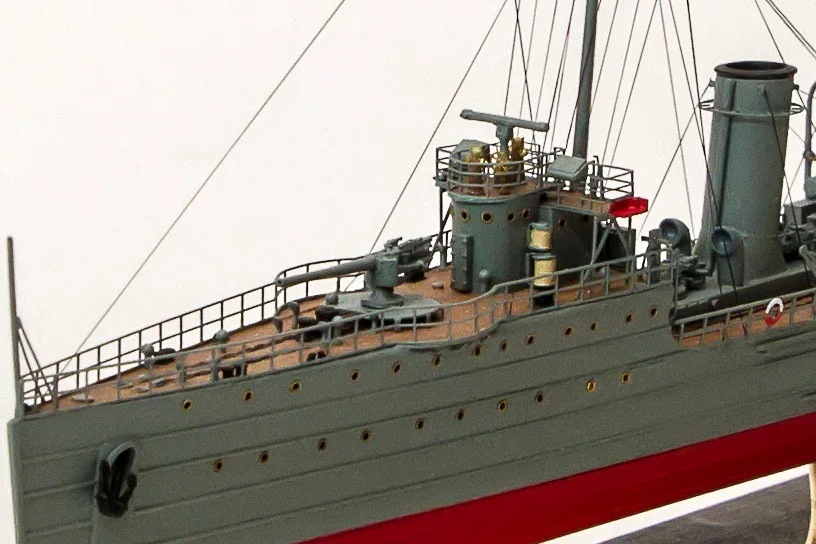








Originally posted by Sergey on: https://karopka.ru/community/user/16400/?MODEL=562366
The Eskadrennyy minonosets type “Schastlivyy” represents a class of destroyers built for the Imperial Russian Navy in the early 20th century. Commissioned in 1914, these vessels were part of Russia’s naval expansion during a period of significant geopolitical tension in Europe. They were designed for speed and agility, featuring a displacement of around 1,100 tons and a length of approximately 92 meters. Armed with torpedoes and light artillery, the “Schastlivyy” class destroyers were intended for operations requiring rapid maneuvering and offensive capabilities. Their construction and deployment provided valuable insights into naval warfare tactics during World War I.
The scale model kit of the “Schastlivyy” 1914 destroyer, produced by Kombrig in 1:350 scale, has garnered positive reviews from hobbyists and model enthusiasts. This model is praised for its precision and attention to detail, capturing the unique characteristics and historical integrity of the original vessel. Modelers appreciate the quality of the resin and photo-etched parts, which provide an excellent fit and require minimal adjustment. The intricate detailing of the ship’s deck, armaments, and other features showcases Kombrig’s commitment to historical accuracy and craftsmanship, making it a sought-after kit for both intermediate and advanced modelers.
Feedback from modelers suggests that the Kombrig 1:350 scale “Schastlivyy” model kit is a rewarding project for those with a keen interest in naval history and early 20th-century warships. While the construction process may pose some challenges due to the intricacies of the design, the end result is a highly detailed and authentic representation of the iconic destroyer. This kit is often recommended for its educational value, providing insights into the engineering and tactical considerations of early 20th-century naval design, as well as for the satisfaction it brings to dedicated hobbyists who enjoy the process of bringing such a historic vessel to life.


Leave a Reply